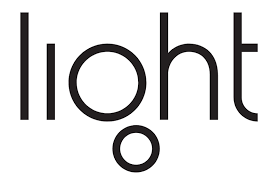

— Something many take for granted.
Few people stop to think about light, much less the effects different colors of light can have on our bodies, moods, and overall health. Stepping outdoors into sunlight, flipping a light switch indoors and shining from our televisions, computers and cell phones… light is all around us.
All of these things result in your eyes being exposed to a variety of visible and sometimes invisible light rays that can have a range of biological effects.
Without even thinking about it, your body uses light to regulate your biological clock and also plays a role in basic functions of the human brain such as alertness, memory, emotion, and cognitive performance.
Blue light is everywhere.
Did you know blue light can make you feel better and increase energy? It can also lead to insomnia and additional health concerns. Sunlight is the main source of blue light, and being outdoors during daylight is where most of us get most of our exposure to it. As mentioned, there are also many man-made, indoor sources of blue light, including fluorescent and energy efficient LED lighting.
Most notably, LED light bulbs, the display screens of computers, electronic notebooks, and smart phones emit significant amounts of high energy visible blue light (HEV). The amount of HEV these devices emit is only a fraction of that emitted by the sun. But the amount of time people spend using these devices as well as the proximity of screens to the user’s face have many health care professionals concerned about possible long-term effects of blue light, especially on eye health.
Blue light exposure may increase the risk of macular degeneration and insomnia.
The fact that blue light penetrates all the way to the retina of the eye is important, because research has shown that too much exposure to blue light can damage light-sensitive cells in the retina. This causes changes that resemble those of macular degeneration which can lead to permanent vision loss.
Interestingly, invisible near infrared light (NIR) helps prime the cells in your retina for ‘repair and regeneration’ and helps reduce the risk of macular degeneration
In its natural form, blue light from the sun helps our bodies determine day from night, and thus, when it’s time for sleep. Exposure to blue light during daytime hours helps maintain a healthful circadian rhythm. Light at night suppresses the secretion of melatonin, the hormone that tells your brain it’s time for bed and can disrupt this cycle, potentially causing sleepless nights and daytime fatigue. Beware that staring at your television, computer, tablet, or phone before you go to bed because it’s having a negative impact on your good night’s rest.
Not all blue light is bad.
It’s well documented that some blue light exposure is essential for good health. Research has shown that high-energy visible light boosts alertness, helps memory and cognitive function and elevates mood. In fact, light therapy is now used to treat some clinical depression cases as well as seasonal affective disorder (SAD) — a type of depression that’s related to changes in seasons that can result in debilitating fatigue, appetite changes, and mood disorders.
Studies have shown that for some people, blue light therapy can be just as effective as antidepressant medications. Most light sources for this therapy emit bright white light that contains a significant amount HEV blue light rays.
Now that you’re enlightened, beware that staring at your television, computer, tablet, or phone before you go to bed . . . is having a negative impact on your eye health and a good night’s rest.
Interested in more information about biologically beneficial light and your health? Visit Science of Light (SOL), a 501(c)(3) non-profit organization that works to raise awareness of mal-illumination. SOL provides a free e-Book: MAL-ILLUMINATION… the silent epidemic and an MP3: The Secret to “Light” Your Metabolic Fire.
I’m a health science researcher focused on biologically beneficial light since 1987 and the founder and past president of Ott Light Systems in Santa Barbara, CA. Currently, I am the executive director of Science of Light, a 501 (c)3 non-profit based in Peoria, Arizona.
View Full Profile Website: http://www.scienceoflight.org/
Originally published at www.wellness.com


